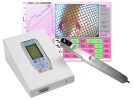Authors
Y_Y WU, Y_L JIANG, X_F HE, X_Y ZHAO, X_M SHAO, J SUN, Z SHEN, S_Y SHOU, J_J WEI, J_Y YE, S_S YAN, J-Q FANG
Lab
Department of Neurobiology and Acupuncture Research, The Third Clinical Medical College, Zhejiang Chinese Medical University, Hangzhou, Zhejiang, China
Journal
Experimental and Therapeutic Medicine
Abstract
The pain_depression dyad is becoming widespread in the clinic and is attracting increasing attention. A previous study by our group found that 100_Hz ectro_acupuncture (EA), but not 2_, 50_ and 2/100_Hz EA, was effective against the reserpine_induced pain_depression dyad. This finding is in contrast to the fact that low_frequency EA is commonly used to treat supraspinal_originating diseases. The present study aimed to investigate the mechanism underlying the effects of 100_Hz EA on the pain_depression dyad. Repeated reserpine injection was found to induce allodynia and depressive behaviors in rats. It decreased _hydroxytryptamine (5_HT) levels and immunoreactive expressions in the dorsal raphe nucleus (DRN). 100_Hz EA alleviated the pain_depression dyad and upregulated 5_HT in the DRN of reserpine_injected rats. Intracerebroventricular injection of para_chlorophenylalanine, an inhibitor of 5_HT resynthesis, suppressed the upregulation of 5_HT in the DRN by 100_Hz EA and partially counteracted the analgesic and anti_depressive effects of 100_Hz EA. The present study was the first to demonstrate that 5_HT in the DRN is involved in mediating the analgesic and anti_depressive effects of 100_Hz EA on the pain_depression dyad. This finding provided a scientific basis for high_frequency EA as a potential treatment for the pain_depression dyad.
BIOSEB Instruments Used:
Electronic Von Frey 4 (BIO-EVF4),Electronic Von Frey 5 with embedded camera (BIO-EVF5)

 Pain - Thermal Allodynia / Hyperalgesia
Pain - Thermal Allodynia / Hyperalgesia Pain - Spontaneous Pain - Postural Deficit
Pain - Spontaneous Pain - Postural Deficit Pain - Mechanical Allodynia / Hyperalgesia
Pain - Mechanical Allodynia / Hyperalgesia Learning/Memory - Attention - Addiction
Learning/Memory - Attention - Addiction Physiology & Respiratory Research
Physiology & Respiratory Research
 Pain
Pain Central Nervous System (CNS)
Central Nervous System (CNS) Neurodegeneration
Neurodegeneration Sensory system
Sensory system Motor control
Motor control Mood Disorders
Mood Disorders Other disorders
Other disorders Muscular system
Muscular system Joints
Joints Metabolism
Metabolism Cross-disciplinary subjects
Cross-disciplinary subjects SFN2024: Meet our team in Chicago on booth #876
SFN2024: Meet our team in Chicago on booth #876 
